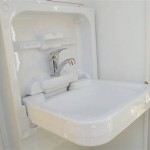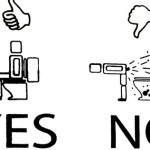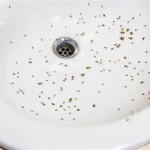My Bathroom Faucet Is Leaking: Identifying the Cause and Addressing the Problem
A leaking bathroom faucet is a common household nuisance that, if left unaddressed, can lead to significant water wastage, increased water bills, and potential damage to surrounding fixtures and structures. Diagnosing the cause of the leak is the first crucial step in effectively resolving the problem. Leaks can originate from various components within the faucet assembly, each requiring a specific approach for repair or replacement. This article will explore common causes of bathroom faucet leaks and provide guidance on troubleshooting and addressing the issues.
Water leaks, regardless of their apparent size, contribute to a significant drain on resources. A small drip, over time, can waste gallons of water. This not only impacts your wallet but also places a strain on municipal water supplies. Furthermore, prolonged exposure to water can promote the growth of mold and mildew, which can be detrimental to health and require costly remediation. The initial investment in addressing a leaking faucet will often be considerably less than the long-term consequences of ignoring it.
Before attempting any repairs, it's paramount to shut off the water supply to the faucet. Typically, shut-off valves are located beneath the sink, one for hot water and one for cold. Turning these valves clockwise will cut off the water flow. If these valves are absent or malfunctioning, the main water supply to the house must be shut off temporarily. Once the water supply is off, open the faucet to relieve any remaining pressure in the lines. This simple precaution will prevent unexpected sprays of water during disassembly.
Identifying Common Culprits: Worn-Out Washers and O-Rings
One of the most frequent causes of faucet leaks is wear and tear on washers and O-rings. These small, inexpensive components provide a watertight seal within the faucet assembly. Over time, the constant friction and pressure of water flow can cause them to deteriorate, crack, or become brittle, leading to leaks. This is particularly prevalent in compression faucets, which rely heavily on these seals to function properly.
Washers are typically flat, rubber or neoprene discs that sit between the valve seat and the faucet stem. When the faucet is turned off, the washer is pressed against the valve seat, creating a seal that prevents water from flowing. The constant compression and exposure to water can eventually degrade the washer, causing it to lose its elasticity and form. This degradation allows water to seep through, resulting in a drip. Replacement washers are readily available at most hardware stores, and selecting the correct size and type is essential for a proper seal.
O-rings are small, circular rubber gaskets that are used to seal various connections within the faucet. They are commonly found around the faucet cartridge or stem. Like washers, O-rings can dry out, crack, or become misshapen over time, leading to leaks. The location of the leak can often indicate which O-ring is failing. For example, a leak around the base of the faucet handle might suggest a problem with the O-ring on the faucet stem. Replacement O-rings are also widely available, and ensuring the correct size and material are crucial for a successful repair. Silicone-based O-rings are often preferred for their superior resistance to water and temperature fluctuations.
To replace washers or O-rings, the faucet must be disassembled. This typically involves removing the faucet handle, which may be held in place by a screw or a set screw. Once the handle is removed, the faucet stem or cartridge can be accessed. Carefully examine the washers and O-rings for signs of wear and tear. Replace any damaged components with new ones of the correct size and type. Before reassembling the faucet, it is advisable to clean the valve seat and other internal components to remove any debris or mineral buildup.
Cartridge Issues in Cartridge Faucets
Cartridge faucets, known for their single-handle operation and smooth water flow control, employ a cartridge to regulate water flow and temperature. This cartridge is a complex component containing internal seals and passageways. Over time, sediment, mineral deposits, or general wear and tear can damage the cartridge, leading to leaks. Leaks in cartridge faucets often manifest as dripping from the spout or around the handle.
The cartridge itself is susceptible to damage from hard water. Minerals like calcium and magnesium can accumulate within the cartridge, restricting water flow and damaging the internal seals. This buildup can also cause the cartridge to become stiff or difficult to operate. In some cases, cleaning the cartridge with a descaling solution may temporarily alleviate the problem, but ultimately, replacement is often necessary.
Replacing a faucet cartridge is a relatively straightforward process, but it requires careful attention to detail. First, shut off the water supply to the faucet. Then, remove the faucet handle, which typically involves unscrewing a set screw or removing a decorative cap. Once the handle is removed, you should be able to access the cartridge retaining clip or nut. Remove the clip or nut to release the cartridge. Pull the old cartridge straight out, taking note of its orientation. Insert the new cartridge in the same orientation and secure it with the retaining clip or nut. Finally, reattach the handle and restore the water supply.
When selecting a replacement cartridge, it's crucial to identify the correct model for your faucet. Cartridges vary in size, shape, and internal configuration. Consult the faucet manufacturer's specifications or bring the old cartridge to a hardware store for comparison to ensure compatibility. Using the wrong cartridge can result in leaks or improper faucet operation.
Valve Seat Corrosion and Damage
The valve seat is the stationary part of the faucet that the washer presses against to create a seal. Over time, corrosion, mineral buildup, or physical damage can compromise the integrity of the valve seat. A damaged valve seat can prevent the washer from forming a tight seal, resulting in a persistent drip. This problem is particularly common in older faucets that have been exposed to hard water for extended periods.
Corrosion can occur due to the chemical composition of the water or the materials used in the faucet construction. Electrochemical reactions between dissimilar metals can also accelerate corrosion. Mineral buildup, primarily calcium and magnesium deposits, can create a rough surface on the valve seat, preventing the washer from seating properly. Physical damage can occur if debris gets lodged between the washer and the valve seat, or if excessive force is applied when tightening the faucet handle.
Repairing a damaged valve seat often requires specialized tools and techniques. In some cases, a valve seat grinding tool can be used to smooth out minor imperfections and remove corrosion. This tool typically consists of a rotating abrasive bit that is used to polish the valve seat surface. However, if the valve seat is severely damaged, replacement may be necessary.
Replacing a valve seat can be a more complex procedure, depending on the faucet design. Some valve seats are threaded and can be unscrewed using a valve seat wrench. Others are pressed into place and may require specialized tools for removal. When replacing a valve seat, it's important to ensure that the new seat is properly installed and sealed to prevent leaks. Apply plumber's tape or a pipe joint compound to the threads before installing the new seat to create a watertight seal.
Prevention is key to minimizing valve seat damage. Using a water softener can reduce mineral buildup, and regularly cleaning the faucet with a mild descaling solution can help prevent corrosion. Avoid using excessive force when tightening the faucet handle, as this can damage both the washer and the valve seat.
Beyond these primary causes, other less frequent issues can contribute to faucet leaks. These include loose connections, damaged faucet bodies, and malfunctioning hose connections to the faucet. Inspecting these components is crucial for a comprehensive assessment of the problem. Ensuring the connections are tightened appropriately, or replacing the damaged parts are appropriate measures.
When dealing with plumbing repairs, prioritizing safety is essential. Before commencing any work, confirming that the water supply is completely turned off is critical. If unfamiliar with plumbing repairs, seeking professional assistance from a qualified plumber is a prudent decision. A plumber possesses the expertise and tools necessary to diagnose and rectify the problem efficiently and safely, preventing more significant damage and ensuring a long-lasting solution.

5 Reasons Your Faucet Is Dripping Water How To Fix It

How To Fix A Leaking Bathtub Faucet Diy Family Handyman

How To Fix A Leaking Bathtub Faucet The Home Depot

How To Fix A Bathroom Faucet 14 Steps

How To Fix A Leaking Bathtub Faucet The Home Depot

How To Fix A Bathroom Faucet 14 Steps

How To Fix A Leaking Bathtub Faucet The Home Depot

How To Fix A Leaky Bathtub Faucet 6 Ways Stop Drips

How To Fix A Leaking Bathtub Faucet Diy Family Handyman

Faucet Repair How To A Leaky Bath
Related Posts







